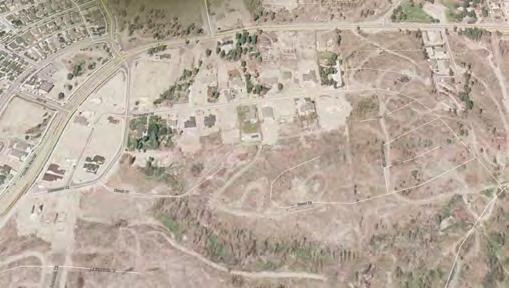Natural Resources Canada (ND) offers the Canadian National Fire Database (CNFDB), a database of wildfire perimeters compiled from provinces, territories, and Parks Canada. Canada Wildfire (2020) offers a variety of potentially useful data and tools. Among these are Burn-P3, a “spatial fire simulation model that is used for land-management planning and wildland fire research.” It simulates fire ignition and spread, accounting for fuel, topography, weather, and ignition patterns, as well as estimates fire probabilities. Gaur et al. (2021) project changes in wildfires near 11 Canadian cities associated with 2 °C to 3.5 °C of global warming. The authors estimate the fire season lengthening by two to eight weeks relative to the period 1989 to 2019. They also find statistically significant evidence of more frequent weather conducive for wildfires around the cities and more intense wildfires near all the cities. Wotten et al. (2005) estimate that in Ontario “overall, the total amount of fire activity in Ontario’s fire management area is expected to increase 15% by 2040 and 50% by 2100.” Wotton et al. (2010) estimate a nationwide increase in fire occurrence of 25% by 2030 and 75% by the end of the 21st century. It is sometimes valuable to know the proportion of WUI fires that originate within houses. The Canadian Forest Service (2013) represents one of several potentially useful geographic datasets of Canadian fire history. Its Large Fire Database fire point dataset distinguishes between lightning and human ignition sources. Among 11,231 large fires from 1959 to 1999, lightning caused about 72%, people caused 25%, and unknown causes account for the rest. Prestemon et al. (2013) offer statistics about ignition sources of US wildfires with more categories. They tabulate ignitions between 2000 and 2008 on US Forest Service land. Fires that begin inside buildings do not appear among the top eight causes. (Sources representing at least 5% are, in decreasing order, lightning, campfires, arson, and burning debris.) Keeley and Syphard (2018) report statistics from CAL FIRE for the ignitions within CAL FIRE’s jurisdiction (generally unincorporated portions of California) from 1919 to 2016. Fires that begin within houses do not appear among the top 11 ignition sources. (Sources representing at least 5% are, in decreasing order, equipment [26%], arson [13%], debris [13%], smoking [11%], vehicles [10%], playing [9%], and lumber [6%].) 2.6 WUI fire vulnerability models The vulnerability of buildings to fire damage is commonly referred to as a response function. Data already presented in Section 2.1 provide crucial information for estimating the vulnerability of buildings to wildfire damage. This section supplements those resources with a few other references. Cohen (1995) offers a Structure Ignition Assessment Model (SIAM) that describes the time to ignite buildings through their windows as a function of the number of panes in windows, glass type, and distance from burning vegetation. Later development of SIAM (Cohen 1999) added a model of the time to ignite wood cladding versus flame distance and radiant heat flux. The Federal Emergency Management Agency’s (2003) benefit-cost analysis toolkit for WUI fires offers general principles of benefit-cost analysis, but it is of limited use for the present project. It does not offer guidance on how to quantify the replacement cost of a house or how to parameterize its fire-resistive features. It offers no data on the probability that a house ignites when it is within or near a wildfire, nor of the degree of damage or loss if the house does ignite.
15








